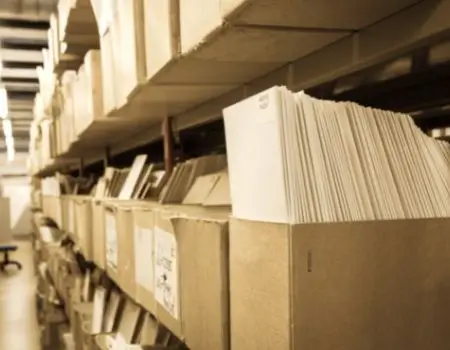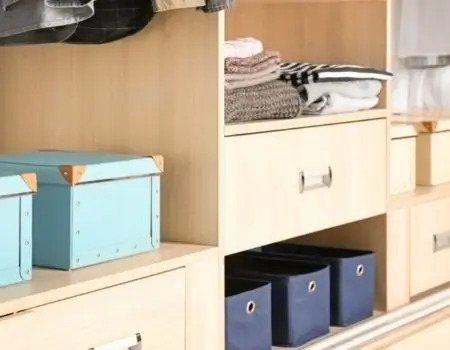Printed photographs offer us a tangible and physical portal into the past. A portal that subsequent generations will be able to call upon for insight and information. Who knows, years from now, your printed photos may provide your direct descendants unparalleled insight into your life or the greater fabric of life that was unfolding during exposure.
Therefore, learning how to preserve photographs long-term should not be labeled as an old-fashioned endeavor. By determining the best way to store old photographs, you are not only working to preserve your most precious memories but also providing a service to future generations. Keep reading to learn how to store pictures safely and how to outfit your photograph collection so it will remain valuable for generations to come.
How to Preserve Photographs and Store Pictures Safely
The following steps will take you through the various actions you should complete to protect and preserve your printed photos. Along the way, you will pick up on tips and tricks and learn how to combat the hazards of long-term photograph storage.
- Determine what photographs you want to print
- Choose where to print your photographs
- Decide how to organize your prints
- Include data and notes with your prints
- Decide where to store your prints
- Consider climate-controlled photograph storage
1. Choose What Photographs You Want to Print
When deciding what photographs to print, you should be cognizant of several things. The first is over-printing. Chances are, especially if you are an avid photographer, you have megabytes upon megabytes of digital photos.
It’s important to ask yourself which of these photos are most important to you and which one could remain as digital photos. You also will want to cross-reference the number of photos you desire to print with the amount of space you have available to store them.
If you are limited on space, you should make sure to not print duplicate photographs or ones of lesser quality. Another option is to rent a climate-controlled storage unit, but more on that later.
2. Choose Where to Print Your Photographs
After you have compiled all the digital photos you desire to print, you will need to decide where to print. These days, there are many online services where you can upload your digital photos and have them printed and shipped to your house. A few of the most popular companies offering this service are: Shutterfly, Snapfish and Mpix.
When you are deciding which printing service to use, make sure acid-free paper is offered as a printing option. Having your pictures printed on acid-free paper will further protect their quality from degrading.
3. Decide How to Arrange Your Prints

Now that you have your photographs printed, you will need to figure out how to organize them all. Common ways to organize old family photos include using archive boxes or photo albums. No matter which arrangement method you choose, you should look for an undyed option that is acid-free.
Under these parameters, you may find yourself opting to stack your photos within a clear plastic tote. However, paper archive boxes are a better route. Unlike plastic, which was invented in 1907, paper boxes have been tested over the course of centuries. Of course, plastic boxes offer a safe temporary arrangement option, but with a lack of history, it is unknown whether the chemical make-up of plastic will affect prints over a century or longer.
If you are looking to provide your prints with additional protection, you can purchase Mylar sleeves. These sleeves are acid-free and often available in a variety of sizes.
4. Include Data & Notes with Your Prints
The actions and memories withheld by your photographs may be obvious to you, but this will not be the case for future generations. Supplementing your collection with data and notes with allow it to be more accessible in the future. Furthermore, providing elements such as “who,” “what,” “when,” “where” and “why” will give your prints historical context and relevance.
Hold on, don’t write directly on the back of your old photographs! This can damage the quality of the print and degrade the paper over time. Instead, opt to use an acid-free index card. You can find several different styles of acid-free index cards on the market; look for one that best suits your collection and your data.
Also, make sure to use a No. 2 pencil and not a pen when writing on your index cards. Pencils have a lower propensity for smudging and are less likely to interact with printed materials in a harmful way.
5. Decide Where to Store Your Prints

Next, you need to decide where you want to store your prints. Storing your photos in a dark, dry, and temperature-regulated areas is best. This likely eliminates your basement or attic, but you can still opt to store a small collection in an upstairs closet.
Your upstairs closet will provide a barrier from sunlight and be protected in the event of a flood. Furthermore, your closet will be safe from drastic changes in temperature and humidity. But what do you do if your collection is too large to be stored in an upstairs closet?
6. Consider Renting a Climate-Controlled Storage Unit
These days, climate-controlled storage units offer unmatched protection for sensitive items like furniture, photographs, collectibles and more. In addition, most professional storage facilities are equipped with a variety of climate-controlled unit sizes. Therefore, you can find storage units large enough to accommodate all your collectibles and other temperature-sensitive possessions.
FAQs
Q: Can you store photos in plastic boxes?
A: Plastic boxes may be great for temporary photo storage, but no one knows how plastic will affect photographs long-term. The best tried and true method for long-term photo storage are archive-quality paper boxes.
Q: What is the best way to store photos long-term?
A: The best way to store photos long-term is a combination of archive boxes, data-filled index cards and climate-controlled self-storage. Archive boxes will provide your photos an acid-free home and protect them from sunlight and exposure. Including an index card with each photo will give your collection historical relevance, and a climate-controlled storage unit will protect your collection from damaging changes in temperature and humidity.
Q: How do you store thousands of old photos?
A: No matter the size of your collection, the best way to store old photos is with acid-free archive boxes and climate-controlled storage. Obviously, the larger your collection is, the more boxes and space you will need. When storing your photos make sure to include index cards that label what is happening in each photo.
Closing Thoughts: The Best Way to Store Printed Photos Long-Term
Printed photographs offer society the unique ability to travel through time. These prints take us to historical events, faraway places and give us the opportunity to spend a moment with figures lost to the workings of time. By learning how to preserve photographs long-term, you are forever physically linking yourself to those who may come after.
As you now know, renting a climate-controlled storage unit is the best way to store old photographs, especially a large collection. Therefore, Store Space is one of the best resources to use to seek out effective storage for your most precious memories.
Store Space offers professional, climate-controlled storage units across the country. To find the unit nearest you, use our storage location finder.





